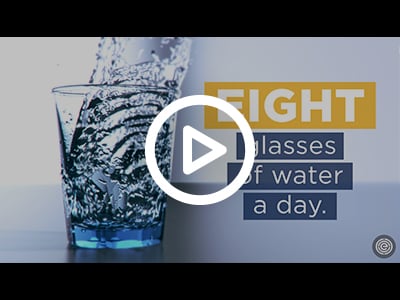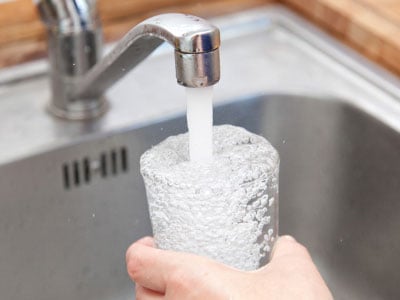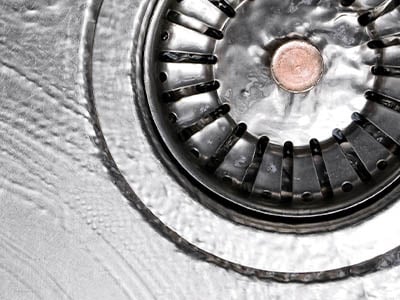St. Lucie Mobile Village
EWG's drinking water quality report shows results of tests conducted by the water utility and provided to the Environmental Working Group by the Florida Department of Environmental Protection, as well as information from the U.S. EPA Enforcement and Compliance History database (ECHO). For the latest quarter assessed by the U.S. EPA (January 2021 - March 2021), tap water provided by this water utility was in compliance with federal health-based drinking water standards.
Utility Details
- Indiantown, Florida
- Serves: 750
- Data available: 2014-2019
- Source: Groundwater
Contaminants Detected
10
EXCEED
EWG HEALTH
GUIDELINES
69 Total Contaminants
- Legal does not necessarily equal safe. Getting a passing grade from the federal government does not mean the water meets the latest health guidelines.
- Legal limits for contaminants in tap water have not been updated in almost 20 years.
- The best way to ensure clean tap water is to keep pollution out of source water in the first place.
Looking for a countertop water filter?
Find out which filters earned EWG's recommendation
See the guideContaminants Detected
1,2-Dibromo-3-chloropropane (DBCP)
Potential Effect: cancer5.9x EWG'S HEALTH GUIDELINE1,2-Dibromo-3-chloropropane (DBCP)
more aboutthis contaminant
1,2-Dibromo-3-chloropropane is a pesticide fumigant banned in the 1970s after scientists discovered it caused sterility in men who worked with it. The chemical causes cancer in laboratory animals and may cause cancer in people.
1,2-Dibromo-3-chloropropane (DBCP) was found at 5.9 times above EWG's Health Guideline.
EWG Health Guideline
This Utility
Legal Limit
National Average
State Average
ppb = parts per billion
Health Risks
The EWG Health Guideline of 0.0017 ppb for 1,2-dibromo-3-chloropropane was defined by the California Office of Environmental Health Hazard Assessment as a public health goal, the level of a drinking water contaminant that does not pose a significant health risk. This health guideline protects against cancer.
Pollution Sources

Agriculture
Filtering Options
Activated Carbon
Reverse Osmosis
Arsenic
Potential Effect: cancer392x EWG'S HEALTH GUIDELINEArsenic
more aboutthis contaminant
Arsenic is a potent carcinogen and common contaminant in drinking water. Arsenic causes thousands of cases of cancer each year in the U.S. Click here to read more about arsenic.
Arsenic was found at 392 times above EWG's Health Guideline.
EWG Health Guideline
This Utility
Legal Limit
National Average
State Average
ppb = parts per billion
Health Risks
The EWG Health Guideline of 0.004 ppb for arsenic was defined by the California Office of Environmental Health Hazard Assessment as a public health goal, the level of a drinking water contaminant that does not pose a significant health risk. This health guideline protects against cancer.
Pollution Sources

Agriculture

Industry
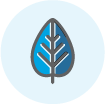
Naturally Occurring
Filtering Options
Reverse Osmosis
Ion Exchange
Cadmium
Potential Effect: harm to the kidney8.3x EWG'S HEALTH GUIDELINECadmium
more aboutthis contaminant
Cadmium is a toxic metal found in food and drinking water. It has been linked to kidney toxicity, bone damage, cancer, and damage to developing fetuses.
Cadmium was found at 8.3 times above EWG's Health Guideline.
EWG Health Guideline
This Utility
Legal Limit
National Average
State Average
ppb = parts per billion
Health Risks
The EWG Health Guideline of 0.04 ppb for cadmium was defined by the California Office of Environmental Health Hazard Assessment as a public health goal, the level of a drinking water contaminant that does not pose a significant health risk. This health guideline protects against harm to internal organs.
Pollution Sources

Industry

Runoff & Sprawl

Naturally Occurring
Filtering Options
Activated Carbon
Reverse Osmosis
Ion Exchange
Haloacetic acids (HAA5)†
Potential Effect: cancer192x EWG'S HEALTH GUIDELINEHaloacetic acids (HAA5)
more aboutthis contaminant
Haloacetic acids are formed when disinfectants such as chlorine are added to tap water. The group of five haloacetic acids regulated by federal standards includes monochloroacetic acid, dichloroacetic acid, trichloroacetic acid, monobromoacetic acid and dibromoacetic acid.
Haloacetic acids (HAA5) was found at 192 times above EWG's Health Guideline.
EWG Health Guideline
This Utility
Legal Limit
National Average
State Average
ppb = parts per billion
Health Risks
The EWG Health Guideline of 0.1 ppb for the group of five haloacetic acids, or HAA5, was defined in a peer-reviewed scientific study by EWG and represents a one-in-a-million lifetime cancer risk level. This health guideline protects against cancer.
Pollution Sources
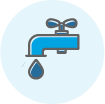
Treatment Byproducts
Filtering Options
Activated Carbon
Reverse Osmosis
Radium, combined (-226 & -228)
Potential Effect: cancer36x EWG'S HEALTH GUIDELINERadium, combined (-226 & -228)
more aboutthis contaminant
Radium is a radioactive element that causes bone cancer and other cancers. It can occur naturally in groundwater, and oil and gas extraction activities such as hydraulic fracturing can elevate concentrations.
Radium, combined (-226 & -228) was found at 36 times above EWG's Health Guideline.
EWG Health Guideline
This Utility
Legal Limit
National Average
State Average
pCi/L = picocuries per liter
Health Risks
EWG applied the health guideline of 0.05 pCi/L, defined by the California Office of Environmental Health Hazard Assessment as a public health goal for radium-226, to radium-226 and radium-228 combined. This health guideline protects against cancer.Pollution Sources

Industry

Naturally Occurring
Filtering Options
Reverse Osmosis
Ion Exchange
Tetrachloroethylene (perchloroethylene)
Potential Effect: cancer2.8x EWG'S HEALTH GUIDELINETetrachloroethylene (perchloroethylene)
more aboutthis contaminant
Dry cleaning chemical tetrachloroethylene, or perc, can cause cancer. It pollutes soil and groundwater due to emissions from dry cleaning facilities, and automotive, metalworking and other industries.
Tetrachloroethylene (perchloroethylene) was found at 2.8 times above EWG's Health Guideline.
EWG Health Guideline
This Utility
Legal Limit
National Average
State Average
ppb = parts per billion
Health Risks
The EWG Health Guideline of 0.06 ppb for tetrachloroethylene was defined by the California Office of Environmental Health Hazard Assessment as a public health goal, the level of a drinking water contaminant that does not pose a significant health risk. This health guideline protects against cancer.
Pollution Sources

Industry

Runoff & Sprawl
Filtering Options
Activated Carbon
Reverse Osmosis
Thallium
Potential Effect: harm to internal organs3.3x EWG'S HEALTH GUIDELINEThallium
more aboutthis contaminant
Thalium is a naturally occurring metal released into the environment from metal smelting and coal burning. Exposure to too much thalium can cause hair loss, liver damage, reduced sperm motility and nervous system impairment.
Thallium was found at 3.3 times above EWG's Health Guideline.
EWG Health Guideline
This Utility
Legal Limit
National Average
State Average
ppb = parts per billion
Health Risks
The EWG Health Guideline of 0.1 ppb for thallium was defined by the California Office of Environmental Health Hazard Assessment as a public health goal, the level of a drinking water contaminant that does not pose a significant health risk. This health guideline protects against harm to internal organs.
Pollution Sources

Industry
Filtering Options
Reverse Osmosis
Ion Exchange
Total trihalomethanes (TTHMs)†
Potential Effect: cancer240x EWG'S HEALTH GUIDELINETotal trihalomethanes (TTHMs)
more aboutthis contaminant
Trihalomethanes are cancer-causing contaminants that form during water treatment with chlorine and other disinfectants. The total trihalomethanes group includes four chemicals: chloroform, bromodichloromethane, dibromochloromethane and bromoform.
Total trihalomethanes (TTHMs) was found at 240 times above EWG's Health Guideline.
EWG Health Guideline
This Utility
Legal Limit
National Average
State Average
ppb = parts per billion
Health Risks
The health guideline of 0.15 parts per billion, or ppb, for the group of four trihalomethanes, or THM4/TTHM, was defined in a peer-reviewed scientific study by EWG and represents a one-in-one-million lifetime cancer risk level.Pollution Sources

Treatment Byproducts
Filtering Options
Activated Carbon
Reverse Osmosis
Toxaphene
Potential Effect: cancer8.3x EWG'S HEALTH GUIDELINEToxaphene
more aboutthis contaminant
Toxaphene is a neurotoxic, persistent and bioaccumulative insecticide classified by the EPA as a probable human carcinogen.
Toxaphene was found at 8.3 times above EWG's Health Guideline.
EWG Health Guideline
This Utility
Legal Limit
National Average
State Average
ppb = parts per billion
Health Risks
The EWG Health Guideline of 0.03 ppb for toxaphene was defined by the California Office of Environmental Health Hazard Assessment as a public health goal, the level of a drinking water contaminant that does not pose a significant health risk. This health guideline protects against cancer.
Pollution Sources

Agriculture
Filtering Options
Activated Carbon
Reverse Osmosis
Vinyl chloride
Potential Effect: cancer3.3x EWG'S HEALTH GUIDELINEVinyl chloride
more aboutthis contaminant
Vinyl chloride is a known human carcinogen used for production of polyvinyl chloride (PVC) plastics. Discharges from plastics manufacturing can contaminate drinking water with vinyl chloride.
Vinyl chloride was found at 3.3 times above EWG's Health Guideline.
EWG Health Guideline
This Utility
Legal Limit
National Average
State Average
ppb = parts per billion
Health Risks
The EWG Health Guideline of 0.05 ppb for vinyl chloride was defined by the California Office of Environmental Health Hazard Assessment as a public health goal, the level of a drinking water contaminant that does not pose a significant health risk. This health guideline protects against cancer.
Pollution Sources

Industry

Runoff & Sprawl
Filtering Options
Activated Carbon
Reverse Osmosis
Includes chemicals detected in 2017-2019 for which annual utility averages exceeded an EWG-selected health guideline established by a federal or state public health authority; radiological contaminants detected between 2014 and 2019.
† HAA5 is a contaminant group that includes monochloroacetic acid, dichloroacetic acid, trichloroacetic acid, monobromoacetic acid and dibromoacetic acid. HAA9 is a contaminant group that includes the chemicals in HAA5 and bromochloroacetic acid, bromodichloroacetic acid, chlorodibromoacetic acid and tribromoacetic acid. TTHM is a contaminant group that includes bromodichloromethane, bromoform, chloroform and dibromochloromethane.
1,1,1-Trichloroethane
more aboutthis contaminant
1,1,1-Trichloroethane is a solvent and a degreasing agent used for manufacturing metal products and as ingredient in cleaners and aerosols. Exposure to 1,1,1-trichloroethane can harm the nervous system, liver and circulatory system.
How your levels compare
This Utility
Legal Limit
National Average
State Average
ppb = parts per billion
Pollution Sources

Industry
Filtering Options
Activated Carbon
Reverse Osmosis
1,1,2-Trichloroethane
more aboutthis contaminant
1,1,2-Trichloroethane is a volatile neurotoxic solvent used for manufacturing products such as plastic wrap and carpet backing. It causes liver tumors in animal studies.
How your levels compare
EWG Health Guideline
This Utility
Legal Limit
National Average
State Average
ppb = parts per billion
Health Risks
The EWG Health Guideline of 0.3 ppb for 1,1,2-trichloroethane was defined by the California Office of Environmental Health Hazard Assessment as a public health goal, the level of a drinking water contaminant that does not pose a significant health risk. This health guideline protects against cancer.
Pollution Sources

Industry
Filtering Options
Activated Carbon
Reverse Osmosis
1,1-Dichloroethylene
more aboutthis contaminant
1,1-Dichloroethylene is used for plastics production. It damages DNA and causes cancer in laboratory animal studies.
How your levels compare
This Utility
Legal Limit
National Average
State Average
ppb = parts per billion
Pollution Sources

Industry
Filtering Options
Activated Carbon
Reverse Osmosis
1,2,4-Trichlorobenzene
more aboutthis contaminant
1,2,4-Trichlorobenzene is an industrial solvent that can harm the adrenal glands and may increase the risk of cancer.
How your levels compare
EWG Health Guideline
This Utility
Legal Limit
National Average
State Average
ppb = parts per billion
Health Risks
The EWG Health Guideline of 5 ppb for 1,2,4-trichlorobenzene was defined by the California Office of Environmental Health Hazard Assessment as a public health goal, the level of a drinking water contaminant that does not pose a significant health risk. This health guideline protects against hormone disruption.
Pollution Sources

Industry
Filtering Options
Activated Carbon
Reverse Osmosis
1,2-Dichloroethane
more aboutthis contaminant
1,2-Dichloroethane is a volatile carcinogenic chemical used to make plastic products such as polyvinyl chloride.
How your levels compare
EWG Health Guideline
This Utility
Legal Limit
National Average
State Average
ppb = parts per billion
Health Risks
The EWG Health Guideline of 0.4 ppb for 1,2-dichloroethane was defined by the California Office of Environmental Health Hazard Assessment as a public health goal, the level of a drinking water contaminant that does not pose a significant health risk. This health guideline protects against cancer.
Pollution Sources

Industry
Filtering Options
Activated Carbon
Reverse Osmosis
1,2-Dichloropropane
more aboutthis contaminant
1,2-Dichloropropane is a volatile carcinogenic solvent discharged from chemical factories and landfills. It also contaminates farmland due to its former use as a soil fumigant.
How your levels compare
EWG Health Guideline
This Utility
Legal Limit
National Average
State Average
ppb = parts per billion
Health Risks
The EWG Health Guideline of 0.5 ppb for 1,2-dichloropropane was defined by the California Office of Environmental Health Hazard Assessment as a public health goal, the level of a drinking water contaminant that does not pose a significant health risk. This health guideline protects against cancer.
Pollution Sources

Agriculture

Industry
Filtering Options
Activated Carbon
Reverse Osmosis
2,4,5-TP (Silvex)
more aboutthis contaminant
2(2,4,5-trichlorophenoxy) propionic acid (2,4,5-TP or Silvex) is a cancer-causing herbicide banned in the U.S. in 1985 because of its toxicity. It is still detected as a groundwater contaminant in areas where it was sprayed or stored.
How your levels compare
EWG Health Guideline
This Utility
Legal Limit
National Average
State Average
ppb = parts per billion
Health Risks
The EWG Health Guideline of 3 ppb for 2,4,5-TP was defined by the California Office of Environmental Health Hazard Assessment as a public health goal, the level of a drinking water contaminant that does not pose a significant health risk. This health guideline protects against harm to internal organs.
Pollution Sources

Agriculture

Runoff & Sprawl
Filtering Options
Activated Carbon
Reverse Osmosis
2,4-D (2,4-dichlorophenoxyacetic acid) is a herbicide that can be applied directly to GMO corn and soy plants engineered to withstand this toxic chemical. Americans' exposures to 2,4-D from food and drinking water will likely increase in years to come as farmers plant more of these GMO crops.
How your levels compare
EWG Health Guideline
This Utility
Legal Limit
National Average
State Average
ppb = parts per billion
Health Risks
The EWG Health Guideline of 20 ppb for 2,4-D was defined by the California Office of Environmental Health Hazard Assessment as a public health goal, the level of a drinking water contaminant that does not pose a significant health risk. This health guideline protects against harm to internal organs.
Pollution Sources

Agriculture

Runoff & Sprawl
Filtering Options
Activated Carbon
Reverse Osmosis
Alachlor (Lasso)
more aboutthis contaminant
Alachlor is a widely used agricultural herbicide. It causes cancer in laboratory animals and may be carcinogenic to people.
How your levels compare
This Utility
Legal Limit
National Average
State Average
ppb = parts per billion
Pollution Sources

Agriculture
Filtering Options
Activated Carbon
Reverse Osmosis
Aluminum
more aboutthis contaminant
Aluminum is a metal released from metal refineries and mining operations. Too much aluminum exposure can impair children's brain development.
How your levels compare
EWG Health Guideline
This Utility
National Average
State Average
ppb = parts per billion
Health Risks
The EWG Health Guideline of 600 ppb for aluminum was defined by the California Office of Environmental Health Hazard Assessment as a public health goal, the level of a drinking water contaminant that does not pose a significant health risk. This health guideline protects against harm to the brain and nervous system.
Pollution Sources

Industry

Naturally Occurring
Filtering Options
Reverse Osmosis
Antimony
more aboutthis contaminant
Antimony is a naturally occurring metal that enters tap water from plumbing fittings and also from industrial uses, such as production of metal alloys, batteries and plastics. Antimony causes organ damage and shortens lifespans in studies of laboratory animals.
How your levels compare
EWG Health Guideline
This Utility
Legal Limit
National Average
State Average
ppb = parts per billion
Health Risks
The EWG Health Guideline of 1 ppb for antimony was defined by the California Office of Environmental Health Hazard Assessment as a public health goal, the level of a drinking water contaminant that does not pose a significant health risk. This health guideline protects against change to the stomach and intestines.
Pollution Sources

Industry

Runoff & Sprawl

Naturally Occurring
Filtering Options
Reverse Osmosis
Atrazine
more aboutthis contaminant
Atrazine is a herbicide commonly detected in drinking water that comes from cornfield and other agricultural runoff. It is a hormone disrupter that harms the male and female reproductive systems of people and wildlife.
How your levels compare
EWG Health Guideline
This Utility
Legal Limit
National Average
State Average
ppb = parts per billion
Health Risks
The EWG Health Guideline of 0.1 ppb for atrazine was defined by EWG based on epidemiological studies of human exposure to atrazine in drinking water.. This health guideline protects against harm to the developing fetus, harm to the reproductive system and hormone disruption.
Pollution Sources

Agriculture
Filtering Options
Activated Carbon
Reverse Osmosis
Barium is a mineral present in rocks, soil and water. High concentrations of barium in drinking water increase the risk of cardiovascular disease and hypertension.
How your levels compare
EWG Health Guideline
This Utility
Legal Limit
National Average
State Average
ppb = parts per billion
Health Risks
The EWG Health Guideline of 700 ppb for barium was defined by EWG as benchmark that protects against harm to the kidneys and the cardiovascular system.
Pollution Sources

Industry

Naturally Occurring
Filtering Options
Reverse Osmosis
Ion Exchange
Benzene
more aboutthis contaminant
Benzene is a known human carcinogen. It also damages blood cells and the nervous system. Emissions from petroleum processing, hazardous waste landfills and underground storage tanks contaminate drinking water with benzene.
How your levels compare
EWG Health Guideline
This Utility
Legal Limit
National Average
State Average
ppb = parts per billion
Health Risks
The EWG Health Guideline of 0.15 ppb for benzene was defined by the California Office of Environmental Health Hazard Assessment as a public health goal, the level of a drinking water contaminant that does not pose a significant health risk. This health guideline protects against cancer.
Pollution Sources

Industry

Runoff & Sprawl
Filtering Options
Activated Carbon
Reverse Osmosis
Benzo[a]pyrene
more aboutthis contaminant
Benzo[a]pyrene is a polycyclic aromatic hydrocarbon, or PAH, released from combustion of fossil fuels and waste incinerators. PAHs increase the risk of cancer; damage the immune, nervous and reproductive systems; and can harm developing fetuses.
How your levels compare
EWG Health Guideline
This Utility
Legal Limit
National Average
State Average
ppb = parts per billion
Health Risks
The EWG Health Guideline of 0.007 ppb for benzo[a]pyrene was defined by the California Office of Environmental Health Hazard Assessment as a public health goal, the level of a drinking water contaminant that does not pose a significant health risk. This health guideline protects against cancer.
Pollution Sources

Runoff & Sprawl
Filtering Options
Activated Carbon
Reverse Osmosis
Beryllium
more aboutthis contaminant
Beryllium is a toxic metal that is both naturally occurring and released into the environment from industrial pollution and incineration. Beryllium can damage lungs, bones and the digestive system.
How your levels compare
EWG Health Guideline
This Utility
Legal Limit
National Average
State Average
ppb = parts per billion
Health Risks
The EWG Health Guideline of 1 ppb for beryllium was defined by the California Office of Environmental Health Hazard Assessment as a public health goal, the level of a drinking water contaminant that does not pose a significant health risk. This health guideline protects against harm to the stomach and intestines.
Pollution Sources

Industry
Filtering Options
Reverse Osmosis
Ion Exchange
Carbofuran
more aboutthis contaminant
Carbofuran is a highly toxic insecticide phased out from use in the U.S. since 2009 due to the risks it posed to children and the environment.
How your levels compare
EWG Health Guideline
This Utility
Legal Limit
National Average
State Average
ppb = parts per billion
Health Risks
The EWG Health Guideline of 0.7 ppb for carbofuran was defined by the California Office of Environmental Health Hazard Assessment as a public health goal, the level of a drinking water contaminant that does not pose a significant health risk. This health guideline protects against harm to the brain and nervous system.
Pollution Sources

Agriculture
Filtering Options
Activated Carbon
Reverse Osmosis
Carbon tetrachloride
more aboutthis contaminant
Carbon tetrachloride, a volatile carcinogenic solvent, has been used in industrial chemical production and as a dry cleaning ingredient.
How your levels compare
EWG Health Guideline
This Utility
Legal Limit
National Average
State Average
ppb = parts per billion
Health Risks
The EWG Health Guideline of 0.1 ppb for carbon tetrachloride was defined by the California Office of Environmental Health Hazard Assessment as a public health goal, the level of a drinking water contaminant that does not pose a significant health risk. This health guideline protects against cancer.
Pollution Sources

Industry
Filtering Options
Activated Carbon
Reverse Osmosis
Chlordane
more aboutthis contaminant
The cancer-causing pesticide chlordane was banned in 1988. Chlordane is persistent and accumulates in the body. It is still found in the environment and in the bodies of adults and newborn babies.
How your levels compare
EWG Health Guideline
This Utility
Legal Limit
National Average
State Average
ppb = parts per billion
Health Risks
The EWG Health Guideline of 0.03 ppb for chlordane was defined by the California Office of Environmental Health Hazard Assessment as a public health goal, the level of a drinking water contaminant that does not pose a significant health risk. This health guideline protects against cancer.
Pollution Sources

Agriculture

Runoff & Sprawl
Filtering Options
Activated Carbon
Reverse Osmosis
Chromium (total)
more aboutthis contaminant
Chromium is a naturally occurring metal, but industrial uses can elevate its levels in water. One form, hexavalent chromium, causes cancer. Total chromium is not a good indicator of the amount of hexavalent chromium in drinking water.
How your levels compare
This Utility
Legal Limit
National Average
State Average
ppb = parts per billion
Pollution Sources

Industry

Naturally Occurring
Filtering Options
Reverse Osmosis
Ion Exchange
cis-1,2-Dichloroethylene
more aboutthis contaminant
1,2-Dichloroethylene, a neurotoxic solvent, exists in two different forms: trans-1,2-dichloroethylene and cis-1,2-dichloroethylene. A mixture of the two forms is used to manufacture other solvents and chemical products.
How your levels compare
This Utility
Legal Limit
National Average
State Average
ppb = parts per billion
Pollution Sources

Industry
Filtering Options
Activated Carbon
Reverse Osmosis
Cyanide
more aboutthis contaminant
Cyanide is a toxic chemical that causes central nervous system and thyroid toxicity. Water contamination is generally the result of metal mining and chemical industry waste, runoff from agriculture and road salts used for melting ice.
How your levels compare
This Utility
Legal Limit
National Average
State Average
ppb = parts per billion
Pollution Sources

Agriculture

Industry

Runoff & Sprawl

Naturally Occurring
Filtering Options
Reverse Osmosis
Ion Exchange
Dalapon
more aboutthis contaminant
The herbicide dalapon has not been used in the U.S. since 1999. In animal studies, exposure to dalapon harms the kidneys.
How your levels compare
This Utility
Legal Limit
National Average
State Average
ppb = parts per billion
Pollution Sources

Agriculture

Runoff & Sprawl
Filtering Options
Activated Carbon
Reverse Osmosis
Di(2-ethylhexyl) adipate
more aboutthis contaminant
Di(2-ethylhexyl) adipate is used in PVC plastic, plastic wrap and other consumer products. It is released as a pollutant from industrial sources and sewage treatment plants. In studies of laboratory animals, di(2-ethylhexyl) adipate can harm fetal development.
How your levels compare
EWG Health Guideline
This Utility
Legal Limit
National Average
State Average
ppb = parts per billion
Health Risks
The EWG Health Guideline of 200 ppb for di(2-ethylhexyl) adipate was defined by the California Office of Environmental Health Hazard Assessment as a public health goal, the level of a drinking water contaminant that does not pose a significant health risk. This health guideline protects against harm to internal organs.
Pollution Sources

Industry

Runoff & Sprawl
Filtering Options
Activated Carbon
Reverse Osmosis
Di(2-ethylhexyl) phthalate
more aboutthis contaminant
Di(2-ethylhexyl) phthalate, or DEHP, is a softener added to PVC plastics. Phthalates are hormone disruptors that target the male reproductive system.
How your levels compare
EWG Health Guideline
This Utility
Legal Limit
National Average
State Average
ppb = parts per billion
Health Risks
The EWG Health Guideline of 3 ppb for di(2-ethylhexyl) phthalate was defined by the Environmental Protection Agency as a one-in-a-million lifetime risk of cancer. Values greater than one-in-a-million cancer risk level can result in increased cancer cases above one in a million people.
Pollution Sources

Industry

Runoff & Sprawl
Filtering Options
Activated Carbon
Reverse Osmosis
Dichloromethane (methylene chloride)
Dichloromethane (methylene chloride)
more aboutthis contaminant
Methylene chloride is a common industrial solvent used for paint stripping, vapor degreasing, printing, electronics manufacturing and cleaning. It causes cancer and liver damage in animal studies.
How your levels compare
EWG Health Guideline
This Utility
Legal Limit
National Average
State Average
ppb = parts per billion
Health Risks
The EWG Health Guideline of 4 ppb for dichloromethane (methylene chloride) was defined by the California Office of Environmental Health Hazard Assessment as a public health goal, the level of a drinking water contaminant that does not pose a significant health risk. This health guideline protects against cancer.
Pollution Sources

Industry

Runoff & Sprawl
Filtering Options
Activated Carbon
Reverse Osmosis
Dinoseb
more aboutthis contaminant
Dinoseb is a herbicide that causes birth defects and reproductive difficulties. It has been banned in the U.S. since 1986.
How your levels compare
This Utility
Legal Limit
National Average
State Average
ppb = parts per billion
Pollution Sources

Agriculture
Filtering Options
Activated Carbon
Reverse Osmosis
Diquat is a herbicide used on potato crops and aquatic weeds.
How your levels compare
EWG Health Guideline
This Utility
Legal Limit
National Average
State Average
ppb = parts per billion
Health Risks
The EWG Health Guideline of 6 ppb for diquat was defined by the California Office of Environmental Health Hazard Assessment as a public health goal, the level of a drinking water contaminant that does not pose a significant health risk. This health guideline protects against cataracts.
Pollution Sources

Agriculture
Filtering Options
Activated Carbon
Reverse Osmosis
Endothall
more aboutthis contaminant
Endothall is a herbicide used to kill aquatic plants and algae. It's also used on potato and cotton crops.
How your levels compare
EWG Health Guideline
This Utility
Legal Limit
National Average
State Average
ppb = parts per billion
Health Risks
The EWG Health Guideline of 94 ppb for endothall was defined by the California Office of Environmental Health Hazard Assessment as a public health goal, the level of a drinking water contaminant that does not pose a significant health risk. This health guideline protects against harm to the stomach and intestines.
Pollution Sources

Agriculture
Filtering Options
Activated Carbon
Reverse Osmosis
Endrin is a banned organochlorine insecticide that is persistent and bioaccumulative. Endrin damages the nervous, immune and reproductive systems in people. It also harms fish, birds and other wildlife.
How your levels compare
EWG Health Guideline
This Utility
Legal Limit
National Average
State Average
ppb = parts per billion
Health Risks
The EWG Health Guideline of 0.3 ppb for endrin was defined by the California Office of Environmental Health Hazard Assessment as a public health goal, the level of a drinking water contaminant that does not pose a significant health risk. This health guideline protects against change to the heart and blood vessels.
Pollution Sources

Agriculture
Filtering Options
Activated Carbon
Reverse Osmosis
Ethylbenzene
more aboutthis contaminant
Ethylbenzene, a component of petroleum, is a volatile cancer-causing chemical primarily used for production of plastics and rubber. Ethylbenzene is also released from gasoline fuel emissions.
How your levels compare
EWG Health Guideline
This Utility
Legal Limit
National Average
State Average
ppb = parts per billion
Health Risks
The EWG Health Guideline of 300 ppb for ethylbenzene was defined by the California Office of Environmental Health Hazard Assessment as a public health goal, the level of a drinking water contaminant that does not pose a significant health risk. This health guideline protects against harm to internal organs.
Pollution Sources

Agriculture

Industry
Filtering Options
Activated Carbon
Reverse Osmosis
Ethylene dibromide
more aboutthis contaminant
Ethylene dibromide, a likely human carcinogen, was used until 1984 as a gasoline additive and a pesticide. It affects the hormone, reproductive and nervous systems; causes testicular atrophy; and damages the heart, liver and kidneys.
How your levels compare
EWG Health Guideline
This Utility
Legal Limit
National Average
State Average
ppb = parts per billion
Health Risks
The EWG Health Guideline of 0.01 ppb for ethylene dibromide was defined by the California Office of Environmental Health Hazard Assessment as a public health goal, the level of a drinking water contaminant that does not pose a significant health risk. This health guideline protects against cancer.
Pollution Sources

Agriculture

Industry
Filtering Options
Activated Carbon
Reverse Osmosis
Fluoride
more aboutthis contaminant
Fluoride occurs naturally in surface and groundwater and is also added to drinking water by many water systems.
How your levels compare
This Utility
Legal Limit
National Average
State Average
ppm = parts per million
Pollution Sources

Treatment Byproducts
Filtering Options
Reverse Osmosis
Glyphosate
more aboutthis contaminant
Glyphosate is the weedkiller marketed as Roundup. The state of California classifies glyphosate as a chemical known to cause cancer.
How your levels compare
EWG Health Guideline
This Utility
Legal Limit
National Average
State Average
ppb = parts per billion
Health Risks
The EWG Health Guideline of 5 ppb for glyphosate was defined by EWG as a one-in-a-million lifetime risk of cancer. Values greater than one-in-a-million cancer risk level can result in increased cancer cases above one in a million people.
Pollution Sources

Agriculture

Runoff & Sprawl
Filtering Options
Activated Carbon
Reverse Osmosis
Heptachlor
more aboutthis contaminant
Heptachlor is an insecticide used for termite control until 1988. It is linked to cancer, hormone disruption and neurotoxicity.
How your levels compare
EWG Health Guideline
This Utility
Legal Limit
National Average
State Average
ppb = parts per billion
Health Risks
The EWG Health Guideline of 0.008 ppb for heptachlor was defined by the California Office of Environmental Health Hazard Assessment as a public health goal, the level of a drinking water contaminant that does not pose a significant health risk. This health guideline protects against cancer.
Pollution Sources

Agriculture
Filtering Options
Activated Carbon
Reverse Osmosis
Heptachlor epoxide
more aboutthis contaminant
Heptachlor epoxide is a breakdown product of heptachlor, a highly toxic and carcinogenic pesticide banned in the U.S. since the 1980s.
How your levels compare
EWG Health Guideline
This Utility
Legal Limit
National Average
State Average
ppb = parts per billion
Health Risks
The EWG Health Guideline of 0.006 ppb for heptachlor epoxide was defined by the California Office of Environmental Health Hazard Assessment as a public health goal, the level of a drinking water contaminant that does not pose a significant health risk. This health guideline protects against cancer.
Pollution Sources

Agriculture
Filtering Options
Activated Carbon
Reverse Osmosis
Hexachlorobenzene (HCB)
more aboutthis contaminant
Hexachlorobenzene is a cancer-causing, neurotoxic and hormone-disrupting chemical used as a pesticide until 1984. It is still found in landfills and hazardous waste sites, and can be detected in people.
How your levels compare
EWG Health Guideline
This Utility
Legal Limit
National Average
State Average
ppb = parts per billion
Health Risks
The EWG Health Guideline of 0.03 ppb for hexachlorobenzene was defined by the California Office of Environmental Health Hazard Assessment as a public health goal, the level of a drinking water contaminant that does not pose a significant health risk. This health guideline protects against cancer.
Pollution Sources

Agriculture

Industry
Filtering Options
Activated Carbon
Reverse Osmosis
Hexachlorocyclopentadiene
more aboutthis contaminant
Hexachlorocyclopentadiene was historically used for the manufacture of currently banned pesticides, such as endrin, dieldrin and chlordane. It’s still used for production of flame retardants, resins and plastics.
How your levels compare
EWG Health Guideline
This Utility
Legal Limit
National Average
State Average
ppb = parts per billion
Health Risks
The EWG Health Guideline of 2 ppb for hexachlorocyclopentadiene was defined by the California Office of Environmental Health Hazard Assessment as a public health goal, the level of a drinking water contaminant that does not pose a significant health risk. This health guideline protects against harm to the stomach and intestines.
Pollution Sources

Industry
Filtering Options
Activated Carbon
Reverse Osmosis
Lindane
more aboutthis contaminant
Lindane is a neurotoxic and carcinogenic insecticide phased out of agricultural use in the U.S. since 2002. It is prescribed to treat lice or scabies, although safer alternatives are available.
How your levels compare
EWG Health Guideline
This Utility
Legal Limit
National Average
State Average
ppb = parts per billion
Health Risks
The EWG Health Guideline of 0.032 ppb for lindane was defined by the California Office of Environmental Health Hazard Assessment as a public health goal, the level of a drinking water contaminant that does not pose a significant health risk. This health guideline protects against cancer.
Pollution Sources

Agriculture

Industry

Runoff & Sprawl
Filtering Options
Activated Carbon
Reverse Osmosis
Manganese
more aboutthis contaminant
Manganese is a naturally occurring element that is common in food and drinking water. Excessive manganese exposures may impair children's attention, memory and intellectual capacity. Click here to read more about manganese.
How your levels compare
EWG Health Guideline
This Utility
National Average
State Average
ppb = parts per billion
Health Risks
The EWG Health Guideline of 100 ppb for manganese was defined by the state of Minnesota as a health risk limit, the concentration of a contaminant that can be consumed with little or no risk to health. This health guideline protects against harm to the brain and nervous system.
Pollution Sources

Industry

Naturally Occurring
Filtering Options
Ion Exchange
Methoxychlor
more aboutthis contaminant
Methoxychlor is an endocrine-disrupting, neurotoxic insecticide similar to DDT. Banned in the U.S. in 2002, methoxychlor was historically used on farm animals and in animal feed, lumber, gardens and agricultural crops.
How your levels compare
EWG Health Guideline
This Utility
Legal Limit
National Average
State Average
ppb = parts per billion
Health Risks
The EWG Health Guideline of 0.09 ppb for methoxychlor was defined by the California Office of Environmental Health Hazard Assessment as a public health goal, the level of a drinking water contaminant that does not pose a significant health risk. This health guideline protects against hormone disruption.
Pollution Sources

Agriculture
Filtering Options
Activated Carbon
Reverse Osmosis
Monochlorobenzene (chlorobenzene)
Monochlorobenzene (chlorobenzene)
more aboutthis contaminant
Monochlorobenzene is used as a solvent for pesticides, a degreasing agent and an intermediate for manufacturing other chemicals. It causes liver and kidney damage in studies of laboratory animals.
How your levels compare
EWG Health Guideline
This Utility
Legal Limit
National Average
State Average
ppb = parts per billion
Health Risks
The EWG Health Guideline of 70 ppb for monochlorobenzene was defined by the California Office of Environmental Health Hazard Assessment as a public health goal, the level of a drinking water contaminant that does not pose a significant health risk. This health guideline protects against harm to internal organs.
Pollution Sources

Agriculture

Industry
Filtering Options
Activated Carbon
Reverse Osmosis
Nitrate
more aboutthis contaminant
Nitrate, a fertilizer chemical, frequently contaminates drinking water due to agricultural and urban runoff, and discharges from municipal wastewater treatment plants and septic tanks. Excessive nitrate in water can cause oxygen deprivation in infants and increase the risk of cancer. Click here to read more about nitrate.
How your levels compare
EWG Health Guideline
This Utility
Legal Limit
National Average
State Average
ppm = parts per million
Health Risks
The EWG Health Guideline of 0.14 ppm for nitrate was defined by EWG . This health guideline protects against cancer and harm to fetal growth and development.
Pollution Sources

Agriculture

Runoff & Sprawl

Naturally Occurring
Filtering Options
Reverse Osmosis
Ion Exchange
Nitrite
more aboutthis contaminant
Nitrite, closely related to the fertilizer chemical nitrate, comes from urban runoff and from fertilizer applied to agricultural lands to pollute drinking water. Nitrite is significantly more toxic than nitrate. Excessive nitrite in water can cause oxygen deprivation in infants and increase the risk of cancer.
How your levels compare
This Utility
Legal Limit
National Average
State Average
ppm = parts per million
Pollution Sources

Agriculture

Runoff & Sprawl

Naturally Occurring
Filtering Options
Reverse Osmosis
Ion Exchange
o-Dichlorobenzene
more aboutthis contaminant
o-Dichlorobenzene is used as a chemical intermediate for making agricultural herbicides. It is toxic to the liver, kidneys and the nervous system, and causes cancer in animal studies.
How your levels compare
EWG Health Guideline
This Utility
Legal Limit
National Average
State Average
ppb = parts per billion
Health Risks
The EWG Health Guideline of 600 ppb for o-dichlorobenzene was defined by the California Office of Environmental Health Hazard Assessment as a public health goal, the level of a drinking water contaminant that does not pose a significant health risk. This health guideline protects against harm to internal organs.
Pollution Sources

Industry
Filtering Options
Activated Carbon
Reverse Osmosis
Oxamyl (Vydate)
more aboutthis contaminant
Oxamyl is a neurotoxic insecticide used on cotton, fruit and vegetable crops. It may harm fetal development.
How your levels compare
EWG Health Guideline
This Utility
Legal Limit
National Average
State Average
ppb = parts per billion
Health Risks
The EWG Health Guideline of 26 ppb for oxamyl was defined by the California Office of Environmental Health Hazard Assessment as a public health goal, the level of a drinking water contaminant that does not pose a significant health risk. This health guideline protects against harm to the central nervous system.
Pollution Sources

Agriculture
Filtering Options
Activated Carbon
Reverse Osmosis
p-Dichlorobenzene
more aboutthis contaminant
p-Dichlorobenzene is a carcinogenic insecticide used in mothballs, and added to deodorant blocks made for trash cans and toilets. Long-term exposure can cause liver damage and kidney problems.
How your levels compare
EWG Health Guideline
This Utility
Legal Limit
National Average
State Average
ppb = parts per billion
Health Risks
The EWG Health Guideline of 6 ppb for p-dichlorobenzene was defined by the California Office of Environmental Health Hazard Assessment as a public health goal, the level of a drinking water contaminant that does not pose a significant health risk. This health guideline protects against cancer.
Pollution Sources

Agriculture

Industry

Runoff & Sprawl
Filtering Options
Activated Carbon
Reverse Osmosis
Pentachlorophenol
more aboutthis contaminant
Pentachlorophenol is a carcinogenic chemical used as a wood preservative. It harms developing fetuses, and causes immune suppression and hormone disruption.
How your levels compare
EWG Health Guideline
This Utility
Legal Limit
National Average
State Average
ppb = parts per billion
Health Risks
The EWG Health Guideline of 0.3 ppb for pentachlorophenol was defined by the California Office of Environmental Health Hazard Assessment as a public health goal, the level of a drinking water contaminant that does not pose a significant health risk. This health guideline protects against cancer.
Pollution Sources

Industry
Filtering Options
Activated Carbon
Reverse Osmosis
Picloram
more aboutthis contaminant
Picloram is a herbicide that in studies of laboratory animals has been linked with reduced testicular size and damage to the liver and thyroid.
How your levels compare
EWG Health Guideline
This Utility
Legal Limit
National Average
State Average
ppb = parts per billion
Health Risks
The EWG Health Guideline of 166 ppb for picloram was defined by the California Office of Environmental Health Hazard Assessment as a public health goal, the level of a drinking water contaminant that does not pose a significant health risk. This health guideline protects against change to internal organs.
Pollution Sources

Agriculture
Filtering Options
Activated Carbon
Reverse Osmosis
Polychlorinated biphenyls (PCBs)
Polychlorinated biphenyls (PCBs)
more aboutthis contaminant
PCBs are synthetic chemicals banned in the U.S. since the 1970s because of their toxicity. PCBs contaminate water by leaching from landfills and hazardous waste clean-up sites. PCBs increase the risk of cancer.
How your levels compare
EWG Health Guideline
This Utility
Legal Limit
National Average
State Average
ppb = parts per billion
Health Risks
The EWG Health Guideline of 0.09 ppb for PCBs was defined by the California Office of Environmental Health Hazard Assessment as a public health goal, the level of a drinking water contaminant that does not pose a significant health risk. This health guideline protects against cancer.
Pollution Sources

Industry

Runoff & Sprawl
Filtering Options
Activated Carbon
Reverse Osmosis
Selenium
more aboutthis contaminant
Selenium is an essential element in diets. But too much selenium can decrease thyroid hormone production and cause hair loss, skin lesions and brittle fingernails.
How your levels compare
EWG Health Guideline
This Utility
Legal Limit
National Average
State Average
ppb = parts per billion
Health Risks
The EWG Health Guideline of 30 ppb for selenium was defined by the California Office of Environmental Health Hazard Assessment as a public health goal, the level of a drinking water contaminant that does not pose a significant health risk. This health guideline protects against hair loss and nail damage.
Pollution Sources

Industry

Naturally Occurring
Filtering Options
Reverse Osmosis
Silver occurs naturally in surface and groundwater and can be added to water as a biocide that inhibits growth of bacteria and algae. Increasingly, the use of antimicrobial nano-sized silver particles in consumer products contributes to silver in water sources used for drinking water.
How your levels compare
This Utility
National Average
State Average
ppb = parts per billion
Pollution Sources

Industry

Runoff & Sprawl

Naturally Occurring
Filtering Options
Reverse Osmosis
Ion Exchange
Simazine
more aboutthis contaminant
Simazine is a hormone-disrupting herbicide related to atrazine. It affects the male and female reproductive systems. In studies of laboratory animals, simazine increases blood levels of estrogen, decreases prolactin and progesterone, and causes mammary and ovarian tumors.
How your levels compare
EWG Health Guideline
This Utility
Legal Limit
National Average
State Average
ppb = parts per billion
Health Risks
The EWG Health Guideline of 0.1 ppb for simazine was defined by EWG based on epidemiological studies of human exposure to atrazine in drinking water. This health guideline protects against harm to the developing fetus, harm to the reproductive system and hormone disruption.
Pollution Sources

Agriculture
Filtering Options
Activated Carbon
Reverse Osmosis
Styrene
more aboutthis contaminant
Styrene is a volatile cancer-causing chemical used for manufacturing Styrofoam (polystyrene) and other plastics. Releases from industrial production sites and hazardous waste landfills cause styrene contamination in drinking water.
How your levels compare
EWG Health Guideline
This Utility
Legal Limit
National Average
State Average
ppb = parts per billion
Health Risks
The EWG Health Guideline of 0.5 ppb for styrene was defined by the California Office of Environmental Health Hazard Assessment as a public health goal, the level of a drinking water contaminant that does not pose a significant health risk. This health guideline protects against cancer.
Pollution Sources

Industry
Filtering Options
Activated Carbon
Reverse Osmosis
Toluene
more aboutthis contaminant
Toluene is a volatile solvent that harms the nervous and immune systems, damages the liver and may increase the risk of miscarriage and birth defects.
How your levels compare
EWG Health Guideline
This Utility
Legal Limit
National Average
State Average
ppb = parts per billion
Health Risks
The EWG Health Guideline of 150 ppb for toluene was defined by the California Office of Environmental Health Hazard Assessment as a public health goal, the level of a drinking water contaminant that does not pose a significant health risk. This health guideline protects against harm to internal organs.
Pollution Sources

Industry
Filtering Options
Activated Carbon
Reverse Osmosis
trans-1,2-Dichloroethylene
more aboutthis contaminant
1,2-Dichloroethylene, a neurotoxic solvent, exists in two different forms: trans-1,2-dichloroethylene and cis-1,2-dichloroethylene. A mixture of the two forms is used to manufacture other solvents and chemical products.
How your levels compare
EWG Health Guideline
This Utility
Legal Limit
National Average
State Average
ppb = parts per billion
Health Risks
The EWG Health Guideline of 60 ppb for trans-1,2-dichloroethylene was defined by the California Office of Environmental Health Hazard Assessment as a public health goal, the level of a drinking water contaminant that does not pose a significant health risk. This health guideline protects against harm to internal organs.
Pollution Sources

Industry
Filtering Options
Activated Carbon
Reverse Osmosis
Trichloroethylene
more aboutthis contaminant
Trichloroethylene, an industrial solvent and common groundwater pollutant, damages the immune system, harms the developing fetus and causes cancer.
How your levels compare
EWG Health Guideline
This Utility
Legal Limit
National Average
State Average
ppb = parts per billion
Health Risks
The EWG Health Guideline of 0.4 ppb for trichloroethylene was defined by the state of Minnesota as health risk limit, the concentration of a contaminant that can be consumed with little or no risk to health. This health guideline protects against harm to the developing fetus and damage to the immune system.
Pollution Sources

Industry
Filtering Options
Activated Carbon
Reverse Osmosis
Uranium
more aboutthis contaminant
Uranium is a known human carcinogen. The federal legal limit for uranium is set at 30 micrograms per liter (corresponding to parts per billion), but utilities can also report uranium in picocuries per liter (pCi/L), which is a measure of radioactivity in water. EWG translated all uranium results to pCi/L using a conversion factor developed by the EPA. With this conversion approach, the limit of 30 ppb corresponds to 20 pCi/L. Drinking water with this much uranium would cause more than 4.6 cancer cases in a population of 100,000. California set a public health goal for uranium of 0.43 pCi/L.
How your levels compare
EWG Health Guideline
This Utility
Legal Limit
National Average
State Average
pCi/L = picocuries per liter
Health Risks
The EWG Health Guideline of 0.43 pCi/L for uranium was defined by the California Office of Environmental Health Hazard Assessment as a public health goal, the level of a drinking water contaminant that does not pose a significant health risk. Three most common uranium isotopes are U-234, U-235 and U-238. All isotopes of uranium are radioactive, and the total radioactivity depends on the ratio of isotopes. This health guideline protects against cancer.
Pollution Sources

Industry

Naturally Occurring
Filtering Options
Reverse Osmosis
Ion Exchange
Xylenes (total)
more aboutthis contaminant
Xylenes are solvents used in industrial and consumer products, such as cleaning agents and paint thinners. Xylenes cause nervous system damage and may harm developing fetuses.
How your levels compare
EWG Health Guideline
This Utility
Legal Limit
National Average
State Average
ppb = parts per billion
Health Risks
The EWG Health Guideline of 1,800 ppb for xylenes was defined by the California Office of Environmental Health Hazard Assessment as a public health goal, the level of a drinking water contaminant that does not pose a significant health risk. This health guideline protects against harm to the brain and nervous system.
Pollution Sources

Industry

Runoff & Sprawl
Filtering Options
Activated Carbon
Reverse Osmosis
Includes chemicals detected in 2017-2019 for which annual utility averages were lower than an EWG-selected health guideline established by a federal or state public health authori.
Other Contaminants Tested
✕St. Lucie Mobile Village compliance with legally mandated federal standards:
- From April 2019 to March 2021, St. Lucie Mobile Village complied with health-based drinking water standards.
- Exceeded EPA's Lead Action Level in the last five years: YES
- 12 QUARTERSin violation of any federal drinking water standard from April 2019 to March 2021
Information in this section on St. Lucie Mobile Village comes from the U.S. EPA Enforcement and Compliance History Online database (ECHO).
LEARN MORE ABOUT THIS UTILITYWater Filters That Can Reduce Contaminant Levels
| Contaminant | Activated Carbon | Reverse Osmosis | Ion Exchange |
| CONTAMINANTS ABOVE HEALTH GUIDELINES | |||
| 1,2-Dibromo-3-chloropropane (DBCP) | ✔ | ✔ | |
| Arsenic | ✔ | ✔ | |
| Cadmium | ✔ | ✔ | ✔ |
| Haloacetic acids (HAA5) | ✔ | ✔ | |
| Radium, combined (-226 & -228) | ✔ | ✔ | |
| Tetrachloroethylene (perchloroethylene) | ✔ | ✔ | |
| Thallium | ✔ | ✔ | |
| Total trihalomethanes (TTHMs) | ✔ | ✔ | |
| Toxaphene | ✔ | ✔ | |
| Vinyl chloride | ✔ | ✔ | |
| OTHER CONTAMINANTS DETECTED | |||
| 1,1,1-Trichloroethane | ✔ | ✔ | |
| 1,1,2-Trichloroethane | ✔ | ✔ | |
| 1,1-Dichloroethylene | ✔ | ✔ | |
| 1,2,4-Trichlorobenzene | ✔ | ✔ | |
| 1,2-Dichloroethane | ✔ | ✔ | |
| 1,2-Dichloropropane | ✔ | ✔ | |
| 2,4,5-TP (Silvex) | ✔ | ✔ | |
| 2,4-D | ✔ | ✔ | |
| Alachlor (Lasso) | ✔ | ✔ | |
| Aluminum | ✔ | ||
| Antimony | ✔ | ||
| Atrazine | ✔ | ✔ | |
| Barium | ✔ | ✔ | |
| Benzene | ✔ | ✔ | |
| Benzo[a]pyrene | ✔ | ✔ | |
| Beryllium | ✔ | ✔ | |
| Carbofuran | ✔ | ✔ | |
| Carbon tetrachloride | ✔ | ✔ | |
| Chlordane | ✔ | ✔ | |
| Chromium (total) | ✔ | ✔ | |
| cis-1,2-Dichloroethylene | ✔ | ✔ | |
| Cyanide | ✔ | ✔ | |
| Dalapon | ✔ | ✔ | |
| Di(2-ethylhexyl) adipate | ✔ | ✔ | |
| Di(2-ethylhexyl) phthalate | ✔ | ✔ | |
| Dichloromethane (methylene chloride) | ✔ | ✔ | |
| Dinoseb | ✔ | ✔ | |
| Diquat | ✔ | ✔ | |
| Endothall | ✔ | ✔ | |
| Endrin | ✔ | ✔ | |
| Ethylbenzene | ✔ | ✔ | |
| Ethylene dibromide | ✔ | ✔ | |
| Fluoride | ✔ | ||
| Glyphosate | ✔ | ✔ | |
| Heptachlor | ✔ | ✔ | |
| Heptachlor epoxide | ✔ | ✔ | |
| Hexachlorobenzene (HCB) | ✔ | ✔ | |
| Hexachlorocyclopentadiene | ✔ | ✔ | |
| Lindane | ✔ | ✔ | |
| Manganese | ✔ | ||
| Methoxychlor | ✔ | ✔ | |
| Monochlorobenzene (chlorobenzene) | ✔ | ✔ | |
| Nitrate | ✔ | ✔ | |
| Nitrite | ✔ | ✔ | |
| o-Dichlorobenzene | ✔ | ✔ | |
| Oxamyl (Vydate) | ✔ | ✔ | |
| p-Dichlorobenzene | ✔ | ✔ | |
| Pentachlorophenol | ✔ | ✔ | |
| Picloram | ✔ | ✔ | |
| Polychlorinated biphenyls (PCBs) | ✔ | ✔ | |
| Selenium | ✔ | ||
| Silver | ✔ | ✔ | |
| Simazine | ✔ | ✔ | |
| Styrene | ✔ | ✔ | |
| Toluene | ✔ | ✔ | |
| trans-1,2-Dichloroethylene | ✔ | ✔ | |
| Trichloroethylene | ✔ | ✔ | |
| Uranium, combined (pCi/L) | ✔ | ✔ | |
| Xylenes (total) | ✔ | ✔ | |
Take Action
Contact Your Local Official
One of the best ways to push for cleaner water is to hold accountable the elected officials who have a say in water quality – from city hall and the state legislature to Congress all the way to the Oval Office – by asking questions and demanding answers.
LEARN MOREFilter Out Contaminants
Check out our recommendations for filters to protect your water against the detected contaminants.
EWG’S WATER FILTER GUIDE